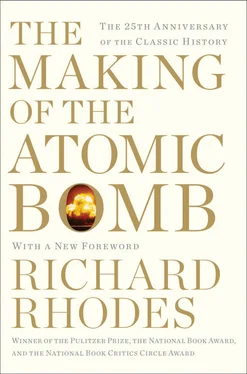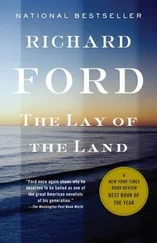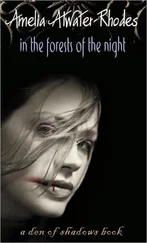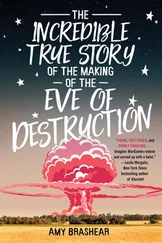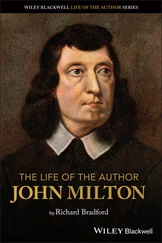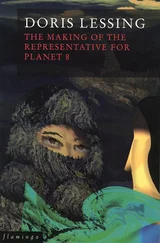Szilard and, 193, 221–22
Zionism of, 86–88, 238
Weizsäcker, Carl F. von, 312, 371, 384, 385, 609
isotope separation and, 350
neutron multiplication experiments of, 343–44
Wells, H. G., 266, 637
Soddy and, 44
Szilard and, 14, 21, 24, 107
Wendover Field, Utah, 584–85
Werner, Louis B., 409, 413–15
Westinghouse, 650
Weyl, Herman, 126
Wheeler, John A., 228, 328
Bohr and, 264–65, 311, 319, 323
on fission-product poisoning, 558–60
plutonium extraction and, 408, 411
White, James, 649
Whitehead, Alfred North, 123
Wideröe, Rolf, 145, 148
Wigner, Eugene, 308, 317
administration of atomic bomb project and, 422, 423
awards of, 106
background of, 106, 108–9, 126
Compton and, 381
Einstein and, 303–4, 305
Fermi and, 206, 440–42
group theory of, 187
Hanford plutonium piles and, 498, 559–60
military aspects of nuclear fission and, 381
Neumann and, 108–9, 196
nuclear chain reaction and, 303–4, 305, 308, 315
nuclear fission and, 265–66, 293–94
physics defined by, 35
pile experiments and, 439–42
plutonium extraction and, 408, 410–11
Szilard and, 16, 18–19, 187, 266, 281–82, 292–93, 303–4, 312–13, 498, 507, 509
William II, Emperor of Germany, 17, 78–79, 80–81, 99, 156, 341–42
Wilson, C. T. R., 67
Wilson, Robert R., 452, 476–77, 566–67
Wilson, Volney, 422–23, 437–39, 442
Wilson, Woodrow, 237
Window, 472–73, 475
Wolfe, Henry C., 520–21
Wood, Edward F. L., Lord Halifax, 526, 528, 538, 620
World Set Free, The (Wells), 24, 26, 44
World War I, 14–16, 90–95, 98–103, 358
xenon effect, 559
X-ray crystallography, 17–19, 82–83
X rays, 238, 670
Compton’s studies with, 363–64
implosion diagnosed with, 573–74
Rutherford’s research on, 39, 43
Thomson’s study of, 38–39, 41
X-ray spectra, 81–85, 115, 363
xylyl bromide, 94
Yalta Conference (1944), 618, 623, 646
Yamamoto, Isoroku, 392
Yasuda, Takeo, 327, 346
York, Herbert F., 327, 502
Ypres, Battle of (1915), 90–92, 94
Zeitschrift für Angewandte Chemie, 230
Zeitschrift für Physik , 127, 141–42, 209
Zeppelin, Count Ferdinand von, 99
Zeppelins, 98–99
Zhukov, Georgi, 401–2
zinc sulfide, 47–48, 130
Zinn, Walter, 288–89, 291
pile studies and, 396, 401, 429–31, 433–35, 437–38, 559
Zionism, 86–88, 90, 173, 238, 636
ZIP control rods, 438–40
Zurich, University of, 172–73
Zyklon B, 475

Simon & Schuster Paperbacks
A Division of Simon & Schuster, Inc.
1230 Avenue of the Americas
New York, NY 10020
www.SimonandSchuster.com
Copyright © 1986 by Rhodes & Rhodes
Foreword copyright © 2012 by Rhodes & Rhodes
All rights reserved, including the right to reproduce this book or portions thereof in any form whatsoever. For information address Simon & Schuster Paperbacks Subsidiary Rights Department, 1230 Avenue of the Americas, New York, NY 10020.
This Simon & Schuster trade paperback edition June 2012
SIMON & SCHUSTER PAPERBACKS and colophon are registered trademarks of Simon & Schuster, Inc.
The Simon & Schuster Speakers Bureau can bring authors to your live event. For more information or to book an event, contact the Simon & Schuster Speakers Bureau at 1-866-248-3049 or visit our website at www.simonspeakers.com.
The Library of Congress has cataloged the hardcover edition as follows:
Rhodes, Richard.
The making of the atomic bomb / Richard Rhodes.
Bibliography: p.
Includes index.
1. Atomic bomb—History. I. Title
QC773.R46 1986 623.4’5119’09 86-15445
ISBN 978-1-4516-7761-4
ISBN: 978-1-4391-2622-6 (eBook)
The author is grateful for permission to reprint excerpts from:
Reminiscences of Los Alamos, 1943–1945 by Lawrence Badash, et al., copyright © 1980 by D. Reidel Publishing Company, Dordrecht, Holland.
Energy and Conflict by Stanley A. Blumberg and Gwinn Owens, copyright © 1976. Published by G. P. Putnam’s Sons and reprinted by permission of Ann Elmo Agency.
Rutherford by A. S. Eve, copyright 1939. Reprinted by permission of Cambridge University Press.
Atoms in the Family by Laura Fermi, copyright 1954. Reprinted by permission of University of Chicago Press.
What Little I Remember by Otto Frisch, copyright © 1979. Reprinted by permission of Cambridge University Press.
Now It Can Be Told by Leslie R. Groves, copyright © 1962 by Leslie R. Groves. Reprinted by permission of Harold Ober Associates, Inc.
Hiroshima Diary by Michihiko Hachiya, translated and edited by Warner Wells, M.D., copyright 1955. Reprinted by permission of University of North Carolina Press.
The Uranium People by Leona Marshall Libby, copyright © 1979. Reprinted by permission of Charles Scribner’s Sons.
Death in Life by Robert Jay Lifton, copyright © 1982 by Robert Jay Lifton. Reprinted by permission of Basic Books, Inc. Publishers.
Children of the Atomic Bomb by Arata Osada, copyright © 1967. Midwest Publishers.
Niels Bohr by Stefan Rozental, copyright © 1967. Reprinted by permission of North-Holland Physics Publishing, Amsterdam.
Enrico Fermi, Physicist by Emilio Segrè, copyright © 1970. Reprinted by permission of University of Chicago Press.
Robert Oppenheimer: Letters and Recollections by Alice Kimball Smith and Charles Weiner, copyright © 1980 by Alice Kimball Smith and Charles Weiner. Reprinted by permission of Harvard University Press; also reprinted by permission of Spencer R. Weart at the American Institute of Physics and for quotes from the Bridgeman Papers, Harvard University Archives.
Adventures of a Mathematician by Stanislaw Ulam, copyright © 1977 by S. M. Ulam. Reprinted by permission of Charles Scribner’s Sons.
Leo Szilard: His Version of the Facts by Spencer R. Weart and Gertrude Weiss Szilard, copyright © 1978. Reprinted by permission of the MIT Press.
All in Our Time by Jane Wilson, copyright © 1975 by the Educational Foundation for Nuclear Science, Chicago, Ill., 60637. Reprinted by permission of the Bulletin of the Atomic Scientists, a magazine of science and world affairs.
Nagaoka indicates indirectly that the visit took place sometime prior to July 1910—after Marsden’s 1909 discovery and before Rutherford’s announcement to Geiger at Christmastime 1910 that he had worked out an explanation.
George Gamow had proposed such a model in Copenhagen in 1928. Bohr credited it to Gamow at the October 1933 Solvay conference, as did Heisenberg. Bohr and his student Fritz Kalkar subsequently developed the model and physicists customarily attribute it to him.
Fractionation—fractional crystallization—was a technique of chemical analysis pioneered by Marie Curie in the course of purifying polonium and radium. Most substances are more soluble at a high temperature than a low. Make a strong boiling solution of a substance—for rock candy, for example, sugar in water—cool the solution, and at some point the substance will emerge out of solution to form pure crystals. Fractional crystallization further involves separating out of the same solution several different, chemically similar substances by taking advantage of their tendency to crystallize at different temperatures according to differences in their atomic weights, lighter elements crystallizing first.
Читать дальше
